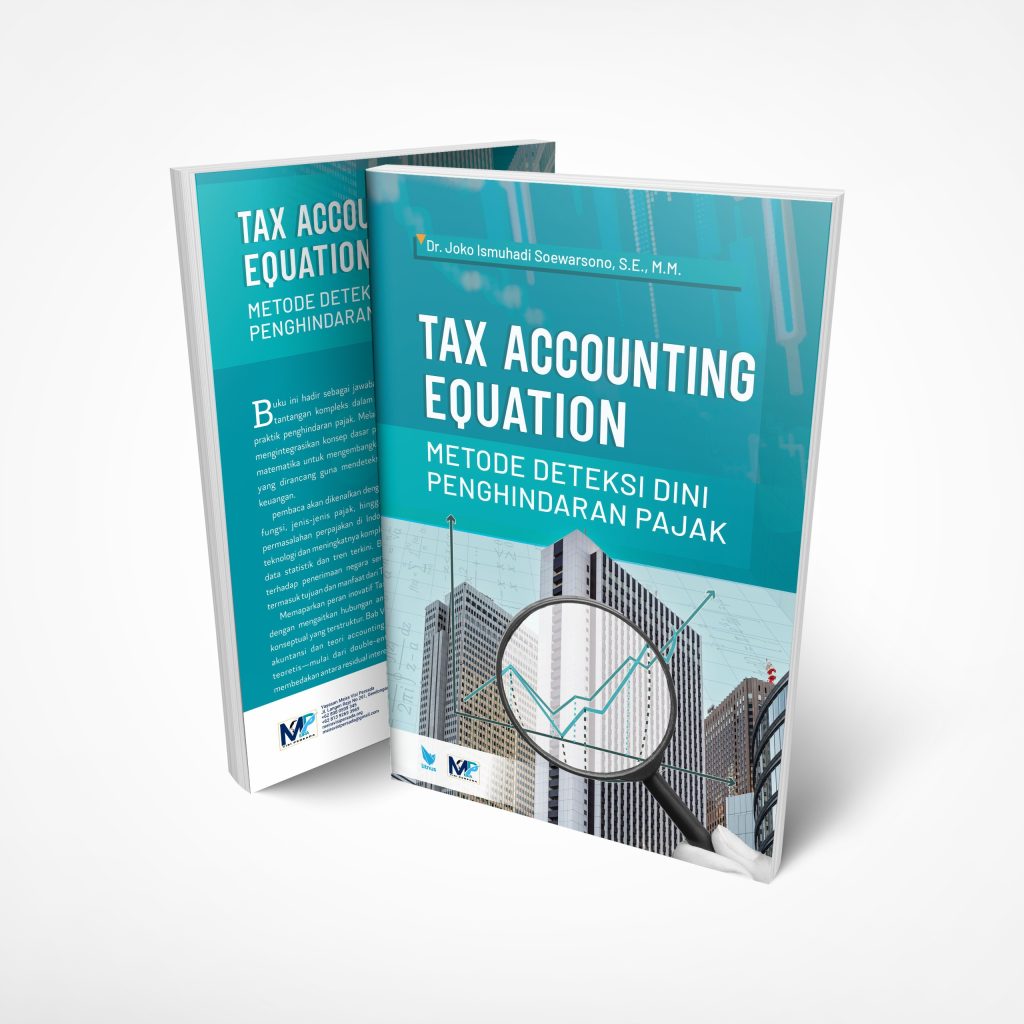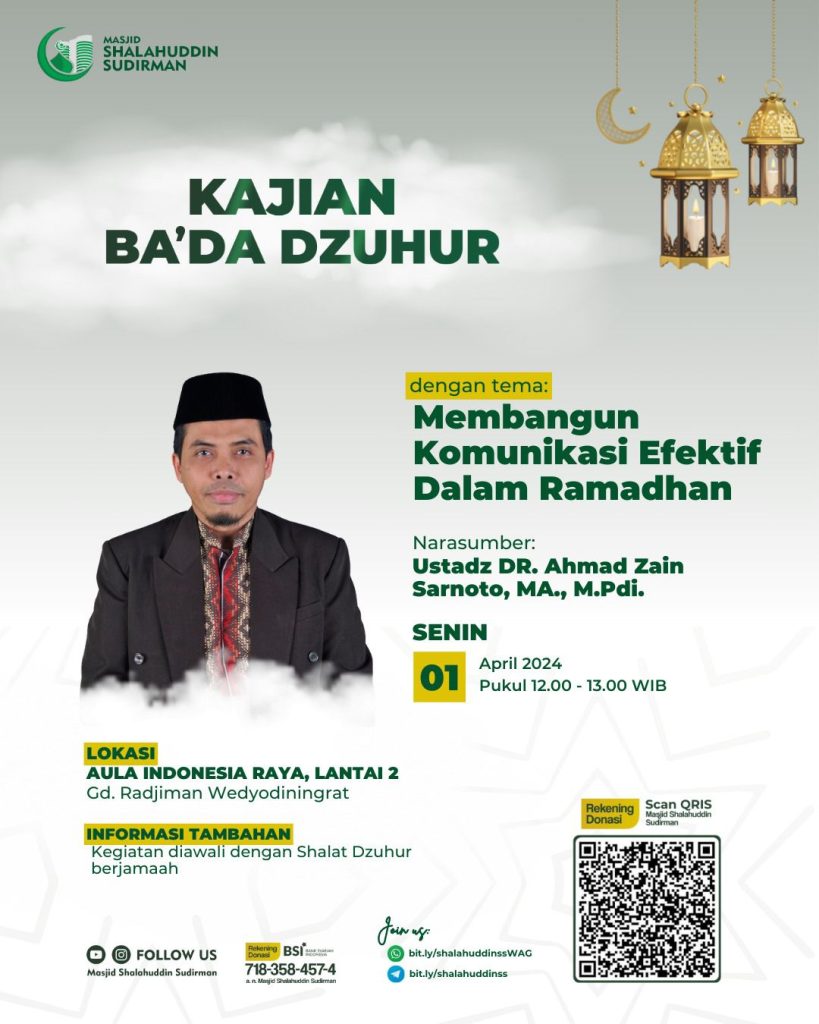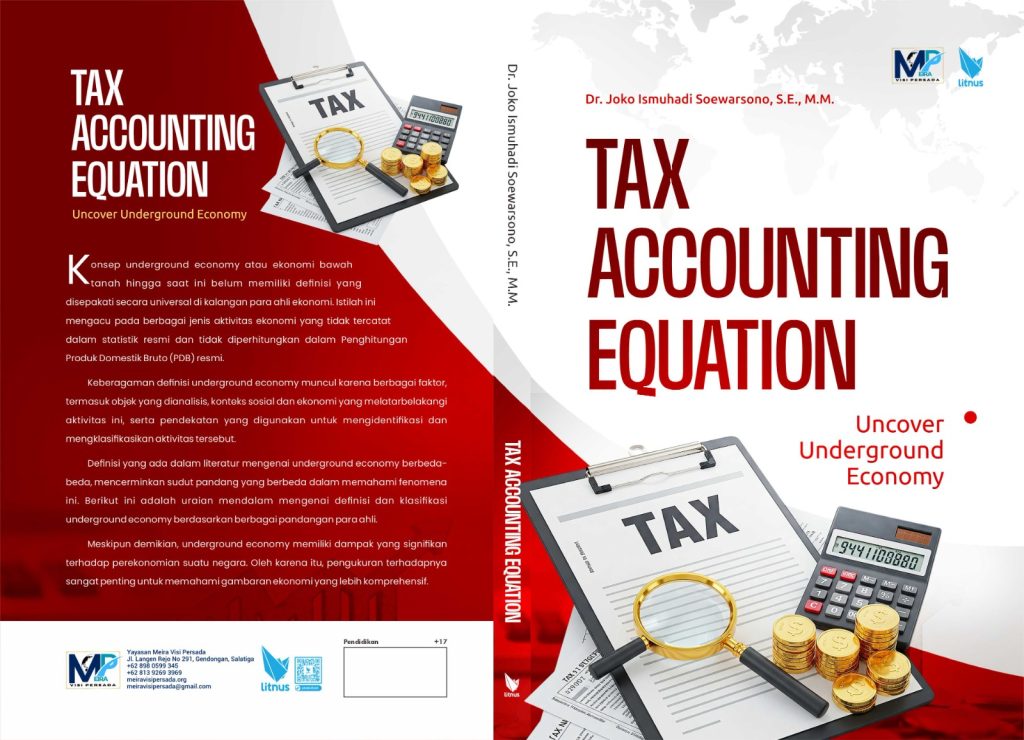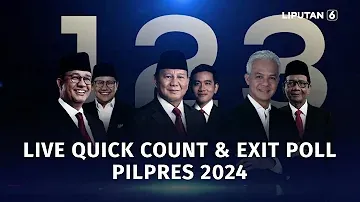
Potential for Successful Management of Underground Economic Activity Taxation Using Dr. Joko Ismuhadi Soewarsono’s Tax Accounting Equation
- Ekonomi
Wednesday, 09 April 2025 04:21 WIB
Jakarta, fiskusnews.com:
1. Introduction
The existence of underground economic activity poses a significant challenge to governments worldwide, primarily due to the substantial loss of potential tax revenue. This unreported income hinders the ability of states to adequately fund essential public services and invest in crucial infrastructure. The decrease in the tax base resulting from the shadow economy can also lead to an increased tax burden on the formal sector, potentially creating a detrimental cycle where more individuals and businesses are incentivized to operate outside the purview of tax authorities. Furthermore, the unreliability of official economic statistics caused by the significant presence of the shadow economy can lead to the formulation of ill-informed policies that may not accurately address the prevailing economic conditions. Beyond revenue implications, the growth of the underground economy fosters an environment of unfair competition for legitimate businesses that adhere to regulations and fulfill their tax obligations. Dr. Joko Ismuhadi Soewarsono’s Tax Accounting Equation (TAE) has emerged as a potential analytical instrument in the effort to combat financial irregularities. Described as a forensic analysis tool, the TAE is designed to uncover inconsistencies within financial reports, offering a possible avenue for detecting tax evasion.
2. Deconstructing Dr. Joko Ismuhadi Soewarsono’s Tax Accounting Equation
The foundation of all accounting practices lies in the basic accounting equation: Assets = Liabilities + Owner’s Equity. This fundamental principle ensures that a company’s balance sheet remains balanced, reflecting the idea that a company’s resources (assets) are financed by either debt (liabilities) or the owner’s investment (equity). This equation is central to the double-entry bookkeeping system, where every financial transaction affects at least two accounts, maintaining the crucial balance in financial records. The accounting equation can be expanded to provide a more detailed understanding of a company’s financial activities by incorporating revenues, expenses, and dividends: Assets = Liabilities + Owner’s Equity + (Revenues – Expenses) – Dividends. This expanded form illustrates how the earnings generated from sales (revenues) and the costs incurred during operations (expenses), along with any distributions to owners (dividends), impact the owner’s stake in the company over time.
Dr. Soewarsono has adapted this fundamental accounting principle into what he terms the Mathematical Accounting Equation (MAE) or Tax Accounting Equation (TAE), presented as: Asset = Liability + Equity + {(Revenues – Expenses) – Dividend}. While this form mirrors the expanded accounting equation, Dr. Soewarsono emphasizes its application within a “Mathematical Rationality Approach” for the purpose of forensic analysis. He also utilizes a reversed mathematical form of this equation for testing purposes: Asset + Dividends + Expenses = Liability + Equity + Revenues. This rearrangement allows for an assessment of whether a company’s reported financial activities exhibit a logical consistency with core accounting principles. The primary objective of Dr. Soewarsono’s TAE is to ascertain whether corporate taxpayers are making a significant contribution to Corporate Income Tax payments or if there is an absence of substantial changes in equity resulting from accumulated profits (retained earnings) without any declaration or distribution of dividends. This suggests that the equation is intended to identify instances where seemingly profitable companies are not paying their expected share of taxes or distributing profits, potentially indicating tax avoidance or evasion. As explicitly stated, the TAE functions as a forensic analysis tool capable of revealing inconsistencies within financial reports . This highlights that Dr. Soewarsono’s work is not merely a restatement of a basic accounting principle but a specific application of it for investigative purposes, aiming to detect financial anomalies that might point towards tax-related misconduct.
3. The Landscape of the Underground Economy and its Tax Implications
The underground economy encompasses income derived from activities that are deliberately concealed from public authorities to avoid the payment of taxes or compliance with regulations. This includes both legal and illegal ventures, often characterized by the use of cash or barter transactions. The primary motivation for participation in this shadow economy is frequently the desire to reduce costs associated with taxation and regulatory compliance. The scope of the underground economy is extensive, spanning a wide array of sectors and economic activities, such as unreported income from self-employment, wages paid “off the books,” and transactions within the black market. This diversity presents a significant challenge for developing uniform taxation and regulatory strategies.
Taxing the underground economy is fraught with inherent difficulties. A major obstacle is the lack of formal records; transactions are often conducted without invoices, receipts, or any form of official documentation, making it exceedingly difficult for tax authorities to accurately track income and expenses. This absence of auditable records severely limits the effectiveness of traditional accounting-based tax enforcement methods. Furthermore, the reliance on cash transactions, a defining feature of the underground economy, leaves no digital footprint for authorities to follow. The anonymity provided by cash makes it challenging to link economic activity to specific individuals or businesses. Participants in the underground economy are also highly motivated to avoid detection by government agencies, actively concealing their activities and income. This inherent secrecy necessitates that tax authorities employ indirect methods and intelligence gathering to identify such clandestine economic activity, as traditional audit approaches relying on taxpayer disclosure are unlikely to be successful. Finally, accurately estimating the size and scope of the underground economy is inherently complex due to its hidden nature. Without reliable data on the scale of the problem, it becomes difficult to assess the effectiveness of any intervention strategies. Various indirect methods, such as the currency demand approach and the discrepancy between income and expenditure, are used to estimate the size of the shadow economy, but each method has its own limitations and uncertainties. The tax implications of this widespread underground activity are substantial, including significant revenue losses for governments, which impacts their capacity to fund public services. It also leads to an erosion of the tax base, potentially resulting in higher tax burdens for the formal sector, and creates an uneven playing field with unfair competition for businesses that comply with tax laws.
4. Analyzing the Potential Application of the Tax Accounting Equation for Underground Economy Taxation
Dr. Soewarsono’s TAE is fundamentally designed to identify inconsistencies within the financial reports submitted by corporate taxpayers. In theory, the equation can highlight situations where the reported values of assets, liabilities, equity, revenues, expenses, and dividends do not align logically according to established accounting principles. For instance, a company that reports significant growth in its assets without a corresponding increase in its reported income or equity might be suspected of engaging in tax evasion by underreporting its revenue. The reversed form of the equation (Asset + Dividends + Expenses = Liability + Equity + Revenues) offers a framework for conducting a comprehensive check on the overall consistency of the reported financial data. Significant deviations between the left and right sides of this equation could indicate the presence of missing or misreported financial information.
It is important to note that snippet explicitly mentions the TAE’s intended use in evaluating whether corporate taxpayers are making an adequate contribution to Corporate Income Tax. This suggests that the initial design and primary application of the TAE are oriented towards scrutinizing the financial records of formal businesses rather than directly addressing the inherently informal nature of the underground economy. Corporate taxpayers are typically required to maintain formal accounting records, which makes them amenable to analysis using an accounting equation. However, this focus on formal entities might restrict the direct applicability of the TAE to the largely undocumented transactions that characterize the core of the underground economy. Despite this limitation, the TAE might still offer potential for indirectly detecting underground activities. While it may not directly capture transactions occurring off the books, it could potentially identify formal businesses that are either facilitating or actively participating in underground economic activity. For example, a formal business might underreport its revenue by diverting a portion of its sales through unreported cash transactions. Such a practice could lead to inconsistencies in its financial statements that might be detectable through the application of the TAE. If a company’s reported revenue appears significantly lower than what would be reasonably expected based on its asset holdings and scale of operations, the TAE could flag this discrepancy, prompting further investigation into the possibility of unreported income derived from underground activities.
5. Evaluating the Potential Effectiveness of the Tax Accounting Equation
The TAE possesses certain strengths that suggest its potential effectiveness in specific contexts. Its design as a forensic tool indicates a focused approach towards identifying financial irregularities that could be indicative of tax evasion. This targeted methodology may prove more efficient than broader, less focused audits in pinpointing particular types of non-compliance. Furthermore, the mathematical foundation of the TAE provides a structured and objective method for analyzing financial data. This reliance on quantitative analysis reduces the potential for subjective interpretations and offers a more evidence-based approach to identifying potential tax evasion. The TAE’s potential for early detection of tax avoidance and evasion, as mentioned in snippet, is another significant advantage. Identifying potential non-compliance at an early stage can enable tax authorities to intervene before substantial revenue losses occur. Regular application of the TAE to financial reports could allow authorities to identify emerging patterns of suspicious activity and implement proactive measures.
However, the direct applicability of the TAE to the core of the underground economy is significantly limited. The underground economy primarily involves individuals and small businesses that often operate without maintaining formal accounting records. The TAE, which relies on the analysis of formal financial statements, is therefore not directly applicable to these entities. Without the fundamental data inputs such as balance sheets, income statements, and records of equity and dividends, the TAE cannot be used for direct analysis of their tax compliance. Moreover, the prevalence of cash-based transactions within the underground economy further restricts the TAE’s effectiveness. These transactions, being inherently informal and often undocumented, bypass the formal accounting system and are therefore invisible to an analysis based on accounting equations. The very nature of the underground economy, operating “off the books,” inherently limits the effectiveness of any detection method that relies on formal accounting data.
6. Identifying Limitations and Challenges in Utilizing the Tax Accounting Equation for the Underground Economy
A primary limitation in applying the TAE to the underground economy is the fundamental issue of data availability and reliability. Individuals and businesses operating within this sector typically do not prepare comprehensive or formal financial statements. Even if some participants in the informal sector maintain rudimentary records, the accuracy and completeness of this information are highly questionable, as there is a strong incentive to underreport income and overstate expenses to avoid detection. Such unreliable data would compromise the validity of any analysis conducted using the TAE. The prevalence of cash transactions in the underground economy presents another significant challenge. These transactions, by their nature, circumvent the formal accounting system, making it exceedingly difficult to trace income and expenses using an accounting-based tool like the TAE.
Furthermore, Dr. Soewarsono’s TAE appears to be primarily designed for analyzing the financial statements of corporate taxpayers. The equation might not be readily adaptable or relevant to the diverse range of individuals and small, informal businesses that constitute the majority of the underground economy. The financial structures and reporting requirements for large corporations differ significantly from those of informal sole proprietorships or small partnerships operating in the shadows. Even within the formal sector, where the TAE is intended to be applied, there is a potential for manipulation of financial records. Sophisticated tax evaders might be able to structure their financial affairs in a manner that satisfies the TAE’s requirements while still concealing income through various means, potentially including underground activities. While the TAE can be useful in identifying certain types of inconsistencies, it might not be a foolproof method against deliberate and sophisticated financial manipulation. Finally, the TAE, in its basic form, might have a limited scope in directly identifying specific types of underground economic activities, such as illegal trade, unreported services, or barter transactions. While inconsistencies detected by the TAE might suggest the presence of unreported income, they might not reveal the specific source or nature of that income, necessitating further investigation using other tools and techniques.
7. Expert Perspectives on Accounting-Based Methods for Tax Evasion Detection
Traditional audits serve as a crucial tool for detecting tax evasion; however, their effectiveness can vary across different income levels and types of evasion . Research indicates that standard random audits may not be particularly effective in uncovering sophisticated evasion tactics often employed through offshore accounts or pass-through businesses, which are common methods for concealing income that could originate from underground activities. High-income individuals and corporations frequently utilize complex financial structures and expert advice to evade taxes in ways that are challenging for routine audits to detect. Studies suggest that tax evasion is more prevalent among those with higher incomes and in closely held businesses, where detection is more difficult due to the complexity of financial arrangements and the lack of third-party reporting. This underscores the limitations of relying solely on traditional accounting-based methods for identifying all forms of tax evasion, including those linked to the underground economy.
Some academic work explores the correlation between accounting earnings and taxable income as a potential indicator of tax evasion. The underlying premise is that a high degree of conformity between reported accounting profits and taxable income might suggest lower levels of tax aggressiveness or evasion. Conversely, significant discrepancies could raise concerns about potential tax evasion. Companies may face a trade-off between manipulating accounting earnings for financial reporting purposes and underreporting income to tax authorities. High book-tax conformity could indicate an absence of such manipulation. However, general-purpose audits may not be uniformly effective in detecting non-compliance across all income levels, particularly at the higher end of the spectrum where sophisticated evasion strategies are more common. Taxpayers with substantial incomes might invest in advanced techniques or strategies that reduce the likelihood of their evasion being detected by tax authorities. The cost of implementing these sophisticated evasion methods might be relatively insignificant compared to the potential tax savings for high-net-worth individuals, making it a worthwhile investment. The net worth method represents another accounting-based technique utilized by authorities to establish taxable income by analyzing changes in a taxpayer’s asset holdings over a specific period. This method can be particularly useful when a taxpayer’s financial records are incomplete or suspected of being fraudulent, which could be the case for individuals significantly involved in the underground economy. By comparing a taxpayer’s net worth at the beginning and end of a period, along with their expenditures, authorities can infer their likely income, even if it was not formally reported.
8. Exploring Alternative and Complementary Approaches to Taxing the Underground Economy
Encouraging the adoption of electronic payment methods and reducing the reliance on cash transactions can establish a digital trail that simplifies tax administration and diminishes opportunities for unreported transactions. Offering incentives for using formal payment methods, such as tax rebates or other benefits, can make them more appealing than cash transactions. By making electronic payments more advantageous for both consumers and businesses, governments can gradually shift economic activity away from the cash-dominated underground economy. Implementing limits on the use of cash and imposing taxes on cash withdrawals and deposits are additional strategies that could be considered. These measures can increase the cost and inconvenience associated with using cash, thereby making formal payment methods more attractive.
Leveraging Information and Communication Technology (ICT) platforms and modern technological solutions can significantly enhance tax compliance by enabling tax administrators to access and analyze data related to taxpayers’ financial transactions. Electronic invoicing systems, for instance, can facilitate the reconciliation of sales and profits, thereby reducing the incidence of underreporting. Creating a digital record of transactions through e-invoicing makes it more challenging for businesses to conceal sales and evade taxes. Furthermore, data matching from various public and private sources can aid in identifying discrepancies and potential instances of tax evasion. Comparing information obtained from banks, payment processors, and other institutions with the tax data reported by taxpayers can reveal inconsistencies that warrant further investigation. This comprehensive approach to data analysis can assist tax authorities in identifying individuals and businesses whose reported income does not align with their apparent financial activities.
Addressing the fundamental drivers that push individuals and businesses into the shadow economy is also crucial. Factors such as high tax burdens, complex regulations, unemployment, and corruption can create incentives for participating in the underground economy. Simplifying the tax system and reducing the burden of compliance can encourage formalization . When the costs and complexities associated with operating formally are reduced, more businesses and individuals might choose to comply with tax regulations. Improving governance, reducing corruption, and strengthening institutions can also foster greater public trust and encourage tax compliance . If citizens believe that their tax contributions are being used effectively and fairly, they are more likely to fulfill their tax obligations.
Specific audit techniques can be employed to identify indicators of underground activity. These include comparative analysis of assets and interest, examination of barter activity, analysis of test checks written, scrutiny of cash transaction reports, and review of loan applications and court records. These techniques focus on identifying discrepancies between reported income and an individual’s apparent lifestyle or accumulation of assets. Individuals earning substantial income in the underground economy might eventually use that cash to acquire assets or incur expenses that are inconsistent with their officially reported income. Econometric models, such as the currency demand approach, can also be utilized to estimate the size of the underground economy and the extent of tax evasion. These models analyze macroeconomic data to infer the scale of hidden economic activity. For instance, by examining trends in currency demand, economists can estimate the portion of economic activity that is likely occurring outside the formal financial system.
9. Conclusion and Recommendations
In summary, Dr. Soewarsono’s Tax Accounting Equation is a forensic tool primarily designed to detect inconsistencies in formal financial reports, particularly for corporate taxpayers. The underground economy presents significant challenges for taxation due to its informal nature, reliance on cash transactions, and the deliberate efforts to conceal economic activity. While the TAE can be effective in identifying tax evasion within the formal sector by analyzing accounting data, its direct applicability to the core of the underground economy is limited by the absence of formal accounting records. Furthermore, traditional accounting-based methods like audits face limitations in detecting sophisticated evasion, which can be particularly relevant in the context of income derived from underground activities. Alternative and complementary approaches, such as promoting electronic payments, enhancing tax administration through technology, and addressing the underlying drivers of informality, appear to hold greater promise for managing the taxation of the underground economy.
The TAE could potentially serve as a supplementary tool for identifying formal businesses that might be involved in or facilitating underground activities by detecting unusual financial patterns. By focusing on the financial statements of formal entities that might interact with the underground economy, tax authorities could indirectly gain insights into the flow of unreported income. However, a comprehensive strategy for effectively managing the taxation of underground economic activity necessitates a holistic approach that combines enhanced tax administration, technological solutions, policy reforms aimed at reducing the incentives for informality, and targeted audit techniques. No single method is likely to be sufficient to address the complex and multifaceted nature of the underground economy.
To further enhance efforts in this area, future research could explore adaptations of accounting principles or forensic accounting techniques that could be applied to the limited financial information available from some participants in the informal sector. Investigating whether simplified accounting frameworks or alternative data sources, such as mobile money transaction data, could be used in conjunction with equation-based analysis might yield valuable insights. Tax authorities should prioritize strategies that encourage the formalization of the economy, reduce the attractiveness of cash transactions, and enhance their capacity to detect unreported income through technological advancements and data analytics. Policymakers should also consider the underlying economic and social factors that drive individuals and businesses into the underground economy and implement reforms to address these root causes. Reducing tax burdens, simplifying regulations, and improving economic opportunities within the formal sector can diminish the incentives for participating in the shadow economy.
Table: Comparison of Methods for Addressing the Underground Economy
| Method | Description | Potential Strengths in Addressing Underground Economy | Key Limitations in Addressing Underground Economy | Applicability |
| Promoting Electronic Payments | Encouraging and incentivizing the use of digital payment methods over cash. | Creates a digital trail, reduces anonymity of transactions, facilitates tracking of income and expenses. | May face resistance from those who prefer cash for anonymity, requires infrastructure and access to banking/digital services. | Direct (Indirect Impact on TAE) |
| Enhanced Tax Administration through Technology | Utilizing ICT platforms, data analytics, and electronic invoicing to improve tax compliance and enforcement. | Allows for better data collection, analysis, and matching, improves detection of discrepancies and potential evasion. | Requires investment in technology and expertise, potential privacy concerns, effectiveness depends on the quality and coverage of data. | Direct & Indirect |
| Dr. Joko Ismuhadi Soewarsono’s TAE | Forensic analysis of formal financial statements to detect inconsistencies indicative of tax evasion. | Mathematically rigorous, potential for early detection of non-compliance within the formal sector. | Directly applicable only to entities with formal accounting records, limited ability to detect cash-based underground transactions. | Indirect (Detection in Formal Sector) |
| Net Worth Method | Analyzing changes in a taxpayer’s assets over time to infer income, particularly useful when records are incomplete. | Can be effective when formal records are lacking or suspected of being fraudulent, can capture income from various sources. | Can be complex and time-consuming to implement, requires thorough investigation and evidence gathering. | Direct (Focus on Individuals) |
| Addressing Underlying Drivers | Implementing policy reforms to reduce tax burdens, simplify regulations, and improve economic opportunities. | Can reduce the incentives for participating in the underground economy by making formal operation more attractive. | Requires significant policy changes and may face political challenges, impact may be long-term. | Indirect (Prevention) |
| Specific Audit Techniques | Targeted audit methods focusing on identifying discrepancies between reported income and lifestyle/asset accumulation. | Can uncover hidden income by analyzing spending patterns and asset holdings that do not align with reported income. | Requires skilled auditors and can be intrusive, may not be effective against those who carefully manage their visible assets. | Direct (Investigation) |
| Econometric Models | Using macroeconomic data to estimate the size of the underground economy and tax evasion. | Provides an overall estimate of the scale of the problem, can identify trends and influencing factors. | Estimates can vary depending on the model and data used, may not provide specific information about individual or business activities. | Estimating Size |
Reporter: Marshanda Gita – Pertapsi Muda
Share
Berita Lainnya
KOMISI (Kelas Online akadeMISI): Seri Pajak Internasional Episode 2 bertajuk Isu-Isu Pajak Internasional & Solusinya
Meningkatkan Rasio Pajak: Sebuah Usulan
Pengusaha Penguasa, Penguasa Pengusaha
KKP Garfield Posumah berkolaborasi dengan Gyandra Learning Center selenggarakan Webinar Perpajakan
KOMISI (Kelas Online akadeMISI) Seri Teori Pajak I Episode 6 bertajuk Pemahaman dan Penghitungan PPh Pasal 25
Persamaan Akuntansi Pajak: Pendekatan Baru untuk Mendeteksi Penghindaran Pajak di Indonesia
KPP Pratama Bandar Lampung Satu : Tegas Menjaga Integritas
Rekomendasi untuk Anda

Berita Terbaru
Eksplor lebih dalam berita dan program khas fiskusnews.com
Tag Terpopuler
# #TAE
# #TAX ACCOUNTING EQUATION
# #TAX FRAUD
# #TAX EVASION












